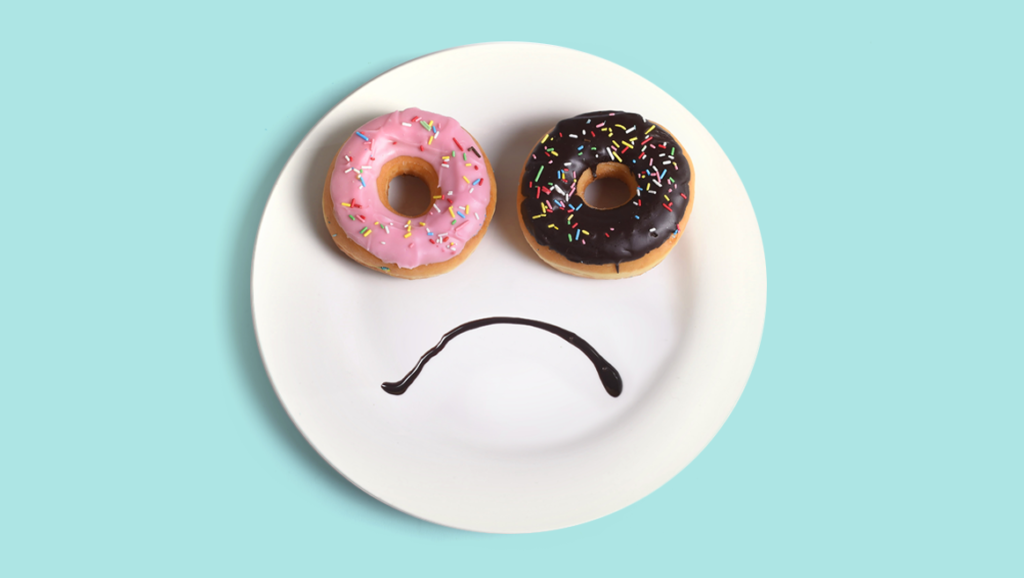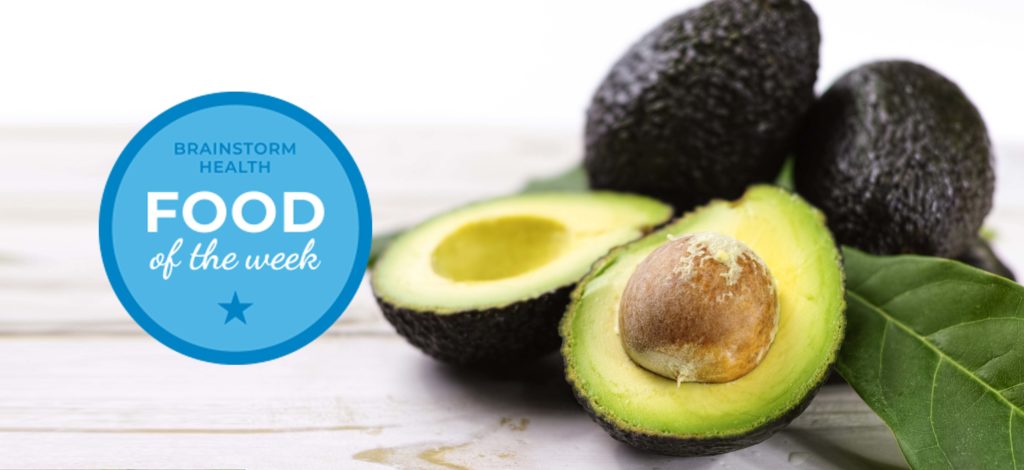Brain Draining Foods

All foods have an effect on our body and unfortunately a lot of ‘food products’ sold today have no nutritional value and are full of toxic compounds that literally cause damage to the cells in our brains. In our last newsletter we covered the best foods that help build healthy brains. This week, we’re listing ones that drain the brain of essential resources.
It’s just as important to remove these harmful foods as it is to add in nourishing ones. As always, you will have to work with your child as you take out foods from their diet. Most foods that are bad for us are also highly-addictive so children (and adults!) find them very hard to give up. Below we’ve listed the worst offenders with some healthy alternatives so you can make some swaps. Remember, every little change counts and if you persevere you’ll be surprised how different your diets could be in just a few months.
Brain Draining Foods
The food industry has made it almost impossible to avoid certain ingredients and we have to work very hard to stay one step ahead. We advise you review the list below and go slowly – removing one food category at a time, weaning the kids off it as you slowly introduce some healthier alternatives. Some families do prefer to go ‘cold turkey’ immediately removing all toxic foods, but you will know what the best strategy is. We’ve suggested a few healthy alternatives for each but there are many more on our recipe blog so be sure to have a look.
SUGAR
Our brains are designed to use glucose as food but not designed to deal with the quantity of glucose that is released into the blood when eating high amounts of refined sugars. You can help control blood sugar spikes by avoiding foods high in refined white sugar or other sweeteners like high fructose corn syrup and even natural foods like honey and maple syrup. It takes longer for the body to break down sugars if combined with fibre, protein and fat, therefore releasing the glucose into the blood stream more evenly. So opting for whole fruits with some nuts is one way to have a sweet treat that won’t harm your health. One of our favourite snacks is a couple of dates with a bit of almond butter.
It’s hard to avoid all packaged foods so learning how to read labels is key as almost all processed foods contain a lot of sugar – even savoury foods! Some tips on how to read labels to balance sugar are at the end of this article.
Do NOT replace with “sugar free” products with artificial sweeteners – more on that below!
REFINED CARBOHYDRATES
Foods that raise blood sugar come in many forms – and refined carbohydrates are also a big culprit. Generally these are in the form of refined white flours (even gluten-free ones!) in breads, pastas, biscuits, cakes and other ‘treats’. Your body processes refined carbohydrates almost as fast as pure sugar. When you can, use flours that are high in fibre and not refined, and again read the labels noting fibre, protein and fat content. You can replace snacks like biscuits with whole-grain oat flapjacks (preferably homemade) but the simplest way to be safe is to choose whole foods like fruits and veggies for snacks.
TRANS FATS
Trans fats were invented by the food industry as a cheap way to use oils and fats that have a longer shelf life and don’t go rancid. This means the foods can stay on the shelf longer so they can sell more. It also means that your body has to deal with an artificial version of fat that causes a huge amount of oxidative stress and damages your cells. Always avoid products that have trans fats – often referred to as ‘hydrogenated’ oils or sometimes ‘shortening’ or ‘margarine’ in the ingredients list. Making your own food is always the safest way to go but if you can’t, just be sure to look out for natural fats in the ingredients list like coconut oil, sustainably-sourced palm oil, or grass-fed butter instead. If you don’t recognise an ingredient, it’s best avoided.
ASPARTAME
Yet another way for the food industry to fool us into thinking they are giving us a ‘healthy’ option. Aspartame is an artificial sweetener that is linked to cancer and is known to be ‘neurotoxic’ meaning it has a direct negative effect on the brain. This popular ingredient is even used in children’s food so they can label it ‘sugar free’ therefore pretending to be healthy. Don’t be fooled!
Some children have a condition called PKU (phenylketonuria) which means they have a hard time breaking down phenylalanine – a major component of aspartame. This can cause very serious side effects so always be careful and read the labels. All ‘artificial sweeteners’ should be avoided. Xylitol is the only sugar substitute we regularly recommend because it is the safest. Even stevia, an all-natural plant, can have an impact on the gut microbiome so we try not to use it too much. Natural sweeteners like honey and maple syrup are also an option when making your own foods as long as you control quantities.
MSG AND OTHER FLAVOURINGS
MSG is an additive I’m sure most of you are familiar with. Monosodium glutamate is another industry invention used to enhance the flavour of foods and to make them more addictive. The amino acid glutamate can be neurotoxic to the brain in large amounts. Our brains require some glutamate to function, but this needs to be balanced with another amino acid called GABA for our brains to remain healthy. I write about it in a blog here if you want to know more. There is no safe alternative that has the same effect as MSG – but adding high-quality sea salt and spices to foods will make them delicious without being dangerous. As always – read the labels! Products that claim to be “MSG-free” and then go on to list ingredients like “Yeast Extract” or “Natural flavourings” are simply calling MSG by other names.
HOW TO CALCULATE SUGAR LOAD IN A FOOD LABEL
To figure out how much ‘free sugar’ is in a food, a quick trick is to read how much protein is listed on the label. If the ratio between carbohydrates and protein is no more than 4:1, this can help keep blood sugar balanced. For example if something has 20 grams of protein then make sure that the carbohydrate is not more than four times that number i.e. 80g.
Another quick tip is to look at how many grams of sugar is listed per 100g. This will give you an idea what percentage of the food is actually just sugar. Once you start reading labels, you’ll be surprised (and dismayed). Some ‘healthy snacks’ will list 20g of sugar per 100g meaning 20% of what you’re eating is pure sugar.
According to the NHS, a child’s safe intake of free sugars a day is around 20g depending on age and weight so reading labels carefully is important if you want to protect your child from daily overload.

Food of the week: Avocados
This fruit is packed with healthy monounsaturated fats as well as fibre, vitamin K, potassium, folate, B6 and vitamin C. It contains a whole host of carotenoids and flavonoids that are antioxidants which protect the brain. I have created a delicious chocolate pudding in my recipe blog that uses avocado as one of the ingredients. If you think this may taste weird, the magic of this recipe is that once combined you get no hint of the avocado flavour – just the creamy texture and of course nutritional benefit!
Supplement of the week: Antioxidant Berry Blast
Antioxidants are what protect our brain cells from damage and we love this supplement as an easy way to get a natural dose in a convenient powder. This delicious blend of blueberries, acai, maqui and camu camu berries can be added to smoothies, cereals, or puddings. You can buy it from The Natural Dispensary.
Please only introduce new foods or supplements under the guidance of your healthcare practitioner and remember dose is important! We always recommend that people start with a very small dose and work up. Supplements are not meant to be used long term. These are general recommendations only and not intended to diagnose or treat any health issues. If you are already a patient of ours, feel free to ask your practitioner if these are suitable and don’t forget to use the discount codes listed below.
Buying supplements from our trusted suppliers
We recommend our patients buy supplements from the below suppliers. Note any supplement mentioned in the above article is for educational purposes only. You should only try new supplements with your child with the approval of your healthcare practitioner. If you have already gotten approval, please feel free to make use of the exclusive Brainstorm Health® discount codes we have negotiated with our suppliers. Some suppliers support Brainstorm Health® with a small commission which we reinvest into creating quality content like this newsletter to give as much free support to our community as possible.
The Natural Dispensary
Discount Code: SMC010
Amrita
Discount Code: IA12LW
Your Health Basket
Discount Code: Brainstorm10
If you’d like to become a new patient please follow this link to request a free Discovery call to discuss your needs.


